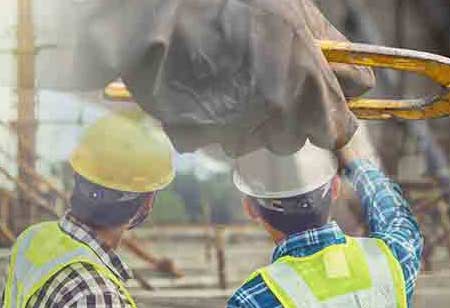Thank you for Subscribing to Construction Business Review Weekly Brief

Navigating the Evolving Landscape of Construction Management
Emily Pencer is a seasoned Project Manager, who brings extensive experience in overseeing the successful execution of diverse projects across various industries. With a keen eye for detail and a passion for efficiency, she excels in coordinating teams, managing timelines and ensuring deliverables meet or exceed client expectations.
Through this article, Emily Pencer shares her insights on the evolving landscape of construction management, highlighting challenges and opportunities posed by technological advancements, such as building information modeling, augmented reality, automation and drone integration, while emphasizing the importance of communication, collaboration and continuous learning in addressing these challenges effectively.
What are your thoughts on the evolving landscape of construction management and its potential implications for addressing the challenges you encounter in meeting your business requirements?
The evolving landscape of construction management presents both challenges and opportunities. As projects become more complex and technology-driven, there’s a greater need for adaptability, innovation and collaboration. Embracing technology advancements like building information modeling (BIM), augmented reality and automation can enhance the team’s efficiency, safety and project outcomes.
It can also help avoid mistakes. However, to use these advantages to its greatest capability, continuing education will be required to be up to date on the latest advancements and software. Using these new systems can help address challenges in construction projects such as tight deadlines, budget constraints and sustainability goals to deliver a more successful project.
What are some of the challenges in your business that current services are unable to provide an optimal solution?
One significant challenge in construction projects and management is when unexpected discoveries, such as underground pipes or utilities that were not indicated in the plans, disrupt project timelines and budgets. While some tools do exist to assist in detecting potential conflicts before construction begins, they often fall short of accurately identifying all hidden obstacles. Consequently, project managers must rely on reactive measures, such as change orders and redesigns to address these issues. This leads to delays and cost overruns.
What cautionary advice would you provide to professionals in your field working in other companies within the construction industry to help them navigate challenges effectively?
My advice would be to prioritize communication, collaboration, and continuous learning. Communication is key in complex projects with multiple companies and stakeholders. It is key when trying to solve issues and mitigate misunderstandings to come to a solution as fast as possible. Collaborating closely with all stakeholders, including contractors, subs and clients, fosters a culture of teamwork and transparency, enabling smoother project execution. When the client sees that you are willing to collaborate with them, they will be more open to your proposals as well in the future.
As construction projects become more complex and technology-driven, embracing innovation and fostering collaboration is essential to enhancing efficiency, safety and project outcomes
Additionally, staying updated on the newest software and technologies through ongoing education and networking helps professionals adapt to evolving challenges and seize opportunities for improvement. By talking with others, you can gain so much experience, which can help you come up with ideas later on.
In your view, which technology trends in Construction Management hold the most promise for revolutionizing the industry, and what aspects of them do you find most exciting?
One exciting technology trend that can be greatly beneficial in the construction industry is the advancement of augmented reality (AR) and virtual reality (VR). This can change the way projects are designed, visualized and executed. AR and VR technologies enable immersive experiences, allowing stakeholders to visualize designs better in 3D, simulate construction sequences, and identify potential issues before they arise. These tools can also enhance communication and decision-making, leading to more efficient and cost-effective project delivery.
Another promising trend is the integration of drones and aerial imaging technologies. We have already been using drones on the new project I am on to track work progress without having to keep changing spots and taking a million pictures. Drones offer unparalleled access to project sites, enabling remote monitoring, progress tracking and site inspections with greater accuracy and efficiency. This technology streamlines data collection enhances safety, and provides valuable insights for project management and planning.








